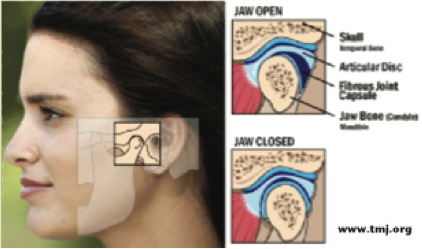Temporomandibular Dysfunction
Are you 1 of the 35 million people suffering from TMD?
What is TMD?

Temporomandibular Dysfunction is characterized by pain in the areas around the jaw. The ability to speak, eat, breathe, chew, swallow, or to make facial expressions can become difficult or painful.
Symptoms include:
- Clicking or Jaw Popping
- Chronic Headaches
- Jaw Locking
- Trouble Sleeping
- Bite Feels Offset
- Jaw Clenching
- Neck Pain
- Teeth Sensitivity
- Shoulder Pain
- Ear Pain
What Can Help?
The National Institute for Health recommends starting conservative approaches first. A very helpful, effective and conservative approach is manual physical therapy
How do you start PT?
- Call Integra PT today: 512-501-1888
- Your evaluation does not require a prescription.
- Treatments, however, require a script from your dentist, physician, or chiropractor.
Self Management of TMD
- Try to avoid biting with two front teeth
- Cut up or tear food
- Chew with molars
- Eat softer foods
- Examples: soft pasta, fish, potatoes, eggs, beans
- Avoid: chewing gum, nuts (almonds), ice, thick bread, tough meats, tortilla chips, etc.
- Try to chew more on injured / hurt side
- Maintain neutral head position while eating
- Chew while looking straight ahead
- Avoid using straws or puckering lips
- Rest your TMJ
- Tongue on roof of mouth, teeth slightly apart, lips together
- Suppress yawn by placing your tongue on the roof of your mouth and pursing your lips
- Exercises (as prescribed by your Physical Therapist)
Manual Physical Therapy
Physical therapy is a safe and effective treatment for TMD. Several patients report benefits immediately after treatment.
-
Feb 18, 2015
by Sophia Maines
